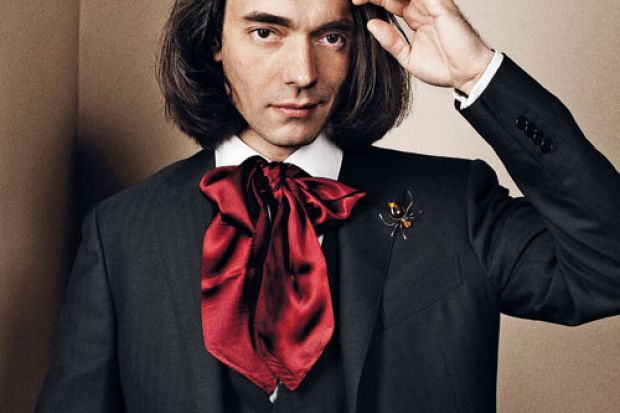In recent years, a number of eminent mathematicians have written popular books about their practice, notably Marcus du Sautoy (Finding Moonshine: A Mathematician’s Journey through Symmetry) and, more recently, Edward Frenkel (Love and Math: The Heart of Hidden Reality). Birth of a Theorem, similarly aimed at a general readership, offers an account of the breakthrough that led in 2010 to its author, Cédric Villani, being awarded a Fields Medal – arguably the greatest accolade for a mathematician. But this book is more than a description of the work – “proofs of nonlinear Landau damping and convergence to equilibrium for the Boltzmann equation”, to give it its formal name – that won him this honour. Villani’s compellingly readable account is peppered with literary references and quotations, insights into his family life and his eclectic taste in music and, in italicised chunks of text, background on the famous mathematicians, fascinating mathematics, elite institutions and disciplinary journals that play key roles in recent developments in the discipline.
The story is told in part via emails exchanged by Villani with his collaborator Clément Mouhot – including, in testament to the obsessive hold such research can have on its devotees, on Christmas Day. These exchanges offer a captivating, blow-by-blow account of their dedication, their delight at breakthroughs and, not infrequently, the despair over setbacks that follow. For anyone particularly interested in how mathematicians think and solve problems, as I am, these first-person records of their collaboration are fascinating.
This account very lucidly describes the desolation felt by mathematicians when a solution simply refuses to be found
Our tale begins in 2008: Villani is working as a professor of mathematics at the École Normale Supérieure in Lyons while wrestling with the Boltzmann equation, which grew out of physicist Ludwig Boltzmann’s work on the theory of gases in the 1870s. Boltzmann provided proofs for much – but not all – of his work, and the lacunae have exercised mathematicians, physicists and engineers for years. But with input from others, including Mouhot, Villani has spotted a connection between the Boltzmann equation and Landau damping, a concept he was previously unfamiliar with.
In 2009, Villani heads to the Institute for Advanced Study in Princeton for five months, intending to put his questions about Landau damping to rest in a couple of weeks. The IAS has a long history of supporting great thinkers, from Albert Einstein to Kurt Gödel and André Weil. But despite the wonderful surroundings and the opportunity to interact with some of the world’s most inspired minds, Villani finds that the proof concerning Landau damping does not come as quickly as he had hoped – even though the time difference between France and the US allows him and Mouhot, between them, to work around the clock as they painstakingly go back over their work, hunting out mistakes and wrong assumptions.
Even among mathematicians, Villani is a strikingly unusual figure. Dubbed “the Lady Gaga of mathematicians”, he dresses more like a 19th-century poet, with shoulder-length hair, a three-piece suit and silk cravat, a fob watch and a giant spider brooch. In an anecdote he uses to illustrate how he communicates his work to non-specialists, Villani recalls hitching home from a concert by the punk-folk band Têtes Raides and being given a lift by a family who assume he is a musician or artist. He reveals that he is a mathematician, and explains that he has “developed a synthetic notion of Ricci curvature lower-boundlessness in complete, locally compact metric measure spaces”. For the next 30 miles, he enlightens them about what this involves. The journey concludes with the family asking him to write down a mathematical equation, aware that they have met someone rather special even if they do not fully appreciate the depth of his research.
Villani is particularly good at detailing the practice and culture of mathematics. He offers a stomach-churning account of facing up to a long-standing engagement, around the end of his first month in Princeton, to go to Rutgers, the State University of New Jersey to deliver a talk about his results. Alarmingly, when the time comes, he does not have any definite results. Although the talk goes well on the surface, on the way home Villani realises that what he has presented is not going to work. The talk has marked a turning point, he says: “To announce results you have not yet proved is a grave sin. The violation of the bond of trust that unites a speaker and his audience. My back was to the wall: if I was ever to make up for my transgressions, I had to prove the result I had just announced.”
As they redouble their efforts, Villani and Mouhot’s frustration mounts. Reading this, it’s hard not to think of the old problem about a snail climbing out of a drain, moving up x units each day but falling back y units each night. The mathematicians’ progress is painfully slow, and for each breakthrough, there are errors to correct and several new problems to solve. At one point, the dream is nearly shattered: Mouhot drafts an email to Villani saying that the technical hurdles are insurmountable and he is giving up. Mercifully, before hitting “send”, he goes through the details of their work one last time and spots another direction that they have yet to explore. I am not aware of any other account that so lucidly describes the desolation felt by mathematicians when a solution simply refuses to be found. Indeed, the very notion of such a distinguished mathematician so often making mistakes and being stuck might come as a surprise to many.
I suspect that many readers will wonder what possesses someone to take on work that is frequently so frustrating and provides so few victories. But as Birth of a Theorem shows, the exhilaration when a breakthrough occurs is beyond compare. After one major advance, Villani quotes Weil: “Every mathematician worthy of the name has experienced, if only rarely, the state of lucid exaltation in which one thought succeeds another as if miraculously…Unlike sexual pleasure, this feeling may last for hours at a time, even for days.”
Finally the work is over; Villani and Mouhot’s proof is complete and has been recognised by the mathematical community. In February 2010, a phone call changes Villani’s life and catapults him into the spotlight: the Fields is his. His description of the awards ceremony in India makes clear that it is a glorious occasion, and yet three months later there comes a time of darkness and depression when he wonders if his achievement really is quite so great after all. It seems extraordinary that he could feel such doubt after all the accolades he has won.
Villani’s account of his journey through the darkness of mathematical research also touches on important themes of academic life, including the balance to be struck between work and family life, between research and teaching, and between meeting the expectations of one’s own institution while pursuing other related opportunities. There is much in Birth of a Theorem to interest non-mathematicians, and they are urged not to be put off by the mathematics – which, incidentally, is likely to be incomprehensible to most mathematicians as well. This book’s great strength is that it remains a compelling and revealing tale nevertheless.
Birth of a Theorem: A Mathematical Adventure
By Cédric Villani
Bodley Head, 2pp, £18.99 and £10.99
ISBN 9781847922526 and 9781448156573 (e-book)
Published 5 March 2015
The author
Mathematics is not, says Cédric Villani, the same everywhere. “Habits, specialties, traditions, even the way of discussing it, are quite different from place to place, even if there are ‘fixed points’ that you recognise.”
The US institutions where he has served as visiting lecturer, he adds, are “less formal and more international, but no less rich in tensions and problems”.
Professor of mathematics at Claude Bernard University Lyon 1 and director of the Institut Henri Poincaré in Paris, Villani says he was “considered for hiring by some of the most prestigious universities in the US by the time I was 30. The salary would have been three or four times my current one. But I decided my place is in France, for this is where I find my culture, my references, my way of life, the food I like, and also the opportunity to play a role in public life.”
Born in the Corrèze and raised in the south of France, Villani, the son of two teachers, says he was “a very studious child, fragile health, reading like crazy. Always trying to please adults, teachers in particular. So shy, never opening my mouth in class, and always afraid to be late. (Now I go on TV almost every week and I am late almost every day.)”
Home is now in “the suburbs of Paris, with two kids and my wife Claire, whom I met more than 20 years ago. A big garden with many chickens and rabbits. And a cat!”
But, adds Villani, “I consider myself a Lyonnais.” Although the “intense cultural life” of Paris is alluring, “Lyon reinforced in me the mentality that things ‘should be done’, and that it is not all about shining and brilliance; sometimes it is better to step out of the light and work quietly”.
As an undergraduate, Villani recalls, he had an “intense social life, and I was somewhat eccentric as people would say. I became president of the students’ union at the École Normale Supérieure at 20-21 years old, shortly after finding my signature dress code. Prior to that, I had been president of the concerts and theatre division in the students’ union. In those days I would go to concerts almost every week and to the cinema almost every day.”
Of the Institut Henri Poincaré where he now spends much of his time, Villani observes that “the most special thing about it is that there are no permanent positions there, only visiting researchers – hundreds of them a year. It is a place of permanent motion, and has been devised to be just that. This means, of course, a very tricky human resources scenario. It took years to calm down the tensions I inherited, reorganise things and so on. It is a very dynamic place entirely built for welcoming people and facilitating exchanges.
“In the past few years under my directorship it has tremendously developed in the direction of outreach (media profile, books, exhibitions, public lectures, etc.) Moreover, our budget has been greatly increased, and we are now undertaking the renovation and annexing of a neighbouring building, which will roughly double our capacity for research and afford us the possibility of making a ‘museum of mathematics’ open to all. I leveraged €14 million in public funding for that project.”
Like his love of mathematics, Villani’s passion for music continues to bring new discoveries. “I’ve recently really got into symphonic hard metal – Nightwish, Therion, Yousei Teikoku and Within Temptation. I was so convincing in describing Nightwish to a music journalist that he proposed I do an interview with them at their next concert. (Unfortunately I was busy that day!)”
What gives him hope? “People are so very interested in progress and ideas. I’ve met so many people around the world fighting for the greater good. Right now I’m in Africa for such a project. So there is hope.”
Karen Shook
Register to continue
Why register?
- Registration is free and only takes a moment
- Once registered, you can read 3 articles a month
- Sign up for our newsletter
Subscribe
Or subscribe for unlimited access to:
- Unlimited access to news, views, insights & reviews
- Digital editions
- Digital access to THE’s university and college rankings analysis
Already registered or a current subscriber? Login





